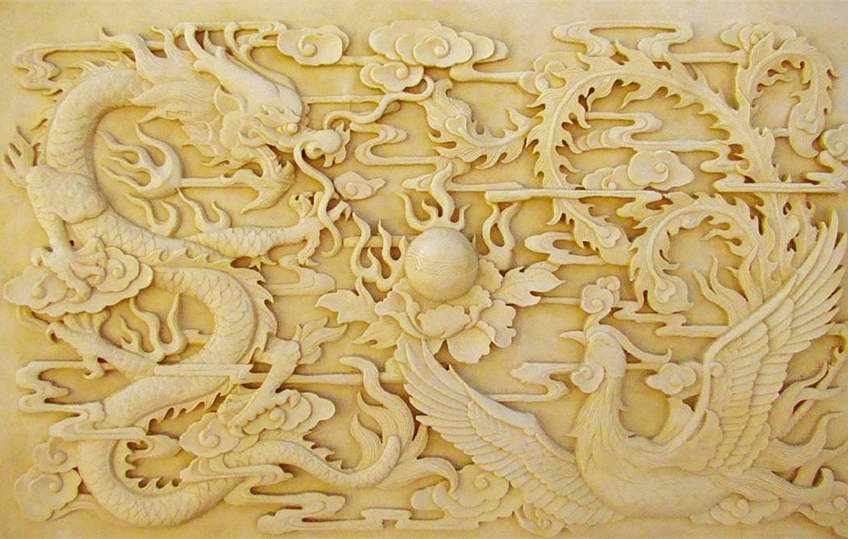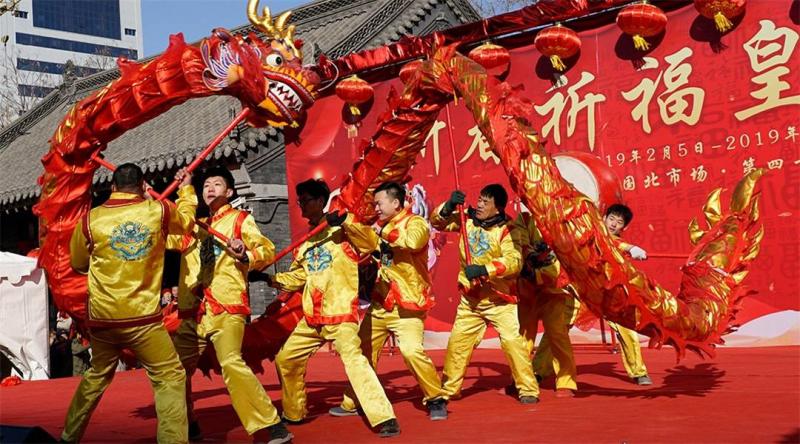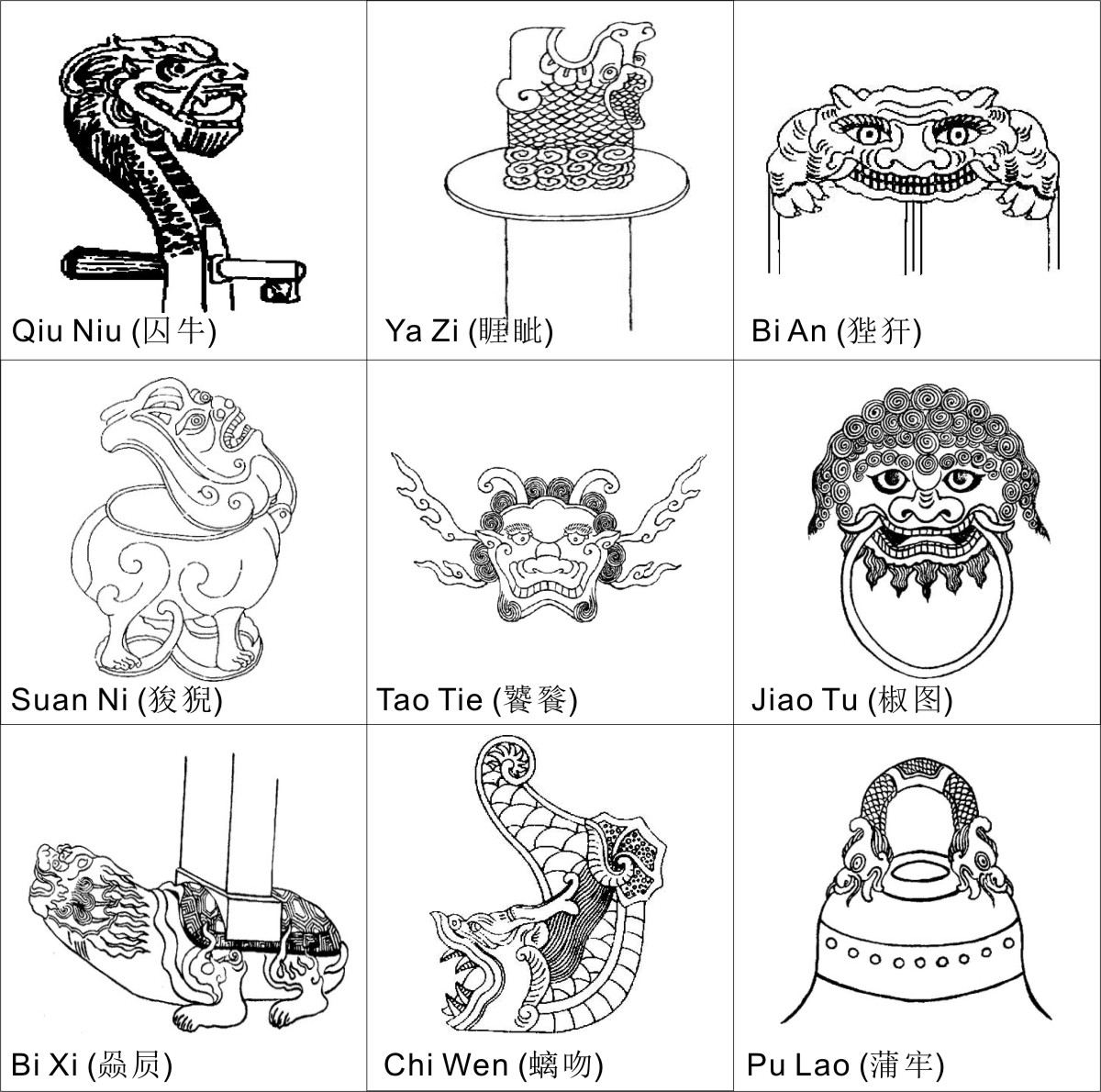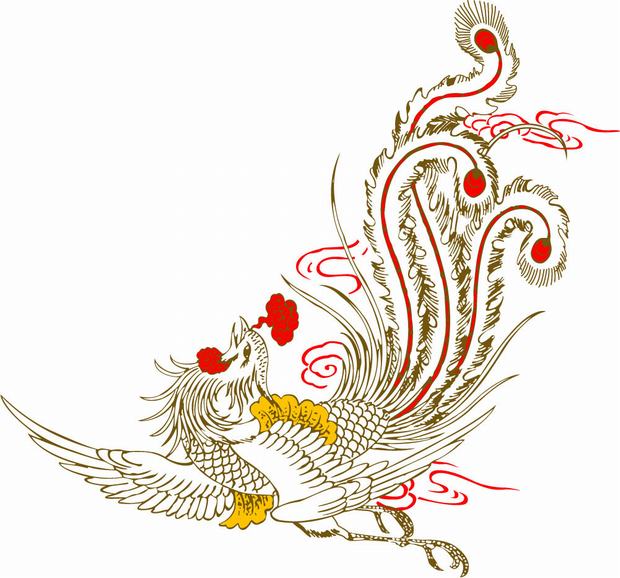Chinese Dragon and Phoenix
Deeply rooted in Chinese culture, dragon and phoenix were regarded as the most sacred animals and used to be emblems of emperor and empress. The Chinese dragon is traditionally the embodiment of the concept of yang (male), while phoenix was paired (yin, female) with dragon. They were used as decorative signs on the buildings, clothing and other daily uses articles of imperial palace to highly show off that the emperor as real dragon and son of heaven. Even the bed he sleep on was called "dragon bed", while throne be the "dragon seat", other Chinese vocabularies like "phoenix carriage" and so on were common to show their heaven-sent status.
The Connotative Meaning of Dragon in China
Lung or Chinese Dragon is unlike the evil dragon in the west; it was a gracious creature that able to do almost everything, flying into the sky and live in the deep ocean or lake. For ancient Chinese people, Lung is an ideal animal that was worshiped as the ruler of river, lake and sea, bringing rain and water to the earth. He is friendly and wise and honored in the temple being built. Lung gradually adopted the meaning of power and boldness, intelligent and ambitious, heroism and nobility, and then referred to the authority and power of imperial house.

Chinese dragons are frequently connected with number 9, as it is a number that of emperor, when combined with number 5, signified the supreme statue of the emperor. The "nine dragon wall" in Forbidden City, displaying in brilliant colors, each playing with a pearl, was carved vividly.
Chinese dragon was firstly adopted as the imaginary animal in prehistoric tribe, and then discovered as decoration on the bronze vessels of Shang Dynasty (over 3,000 years ago). Earliest legends described it an animal with fish scales and long beard. With years by, people acquiring sneaker's neck, tiger's paw, eagle's claw and other and other distinctive features of other animals until it became what we see today.
Chinese Dragon Dance
Chinese Dragon Dance was originated in Han Dynasty, as important as Lion Dance in Chinese culture. The Dragon Dance signifies the end of year and the coming of New Year, always performing on big occasions, Chinese New Year celebrations and important opening ceremony. It requires a group of people coordinate their movements with each other when dancing; any mistake would disturb the entertainment. Each team member must be able to leap, crouch and change the direction and pace of movements, requiring discipline, stamina and a substantial amount of practice.

Zodiac - Dragon
Along with Chinese calendar, there are 12 different animals representing a cycle of 12 years, each for one year. Long is among these animals, which the year of it called "year of dragon". It is said that the one who born on year of dragon has some personal traits of dragon; he would be confidence and set high standards for himself, and will not listen to others. So dragon years are popular to have babies in China, but people would check male dragon personalities and women dragon personalities in advance. In Chinese horoscopes there are specific about love partnership with other animal signs with the one born in Dragon year. For example, dragon and dragon, it is said that they can accomplish anything together; and a dragon & rooster make a good couple, but not to be egotistic; dragon & pig can keep caring and deeply affectionate relationship. Some Chinese people believe in this destiny but efforts would also need to maintain long loving relationship.
Nine Sons of the Dragon:
Qiu Niu (囚牛), is yellow with scaly horns and fond of music. This musical dragon is not only on the two-stinged bowed musical instrument Huqin of Han nationality, but also on the Yueqin of Yi nationality, Sanxian Qin (Three-stinged musical instrument) of Bai nationality and some Tibetan musical instruments.
Ya Zi (睚眦), looks like a jackal, and is bloodthirsty and with an irascible temper. It is often carved on the handle and scabbard of the knife and sword.
Bi An (狴犴), looks like a tiger, powerful and good at lawsuits. People engrave it on the prison door.
Suan Ni (狻猊), shaped like a lion, it likes smoke and fire, and always sitting there. As the lion was introduced into China with Buddhism, and Buddha Sakyamuni had the metaphor of "fearless lion", Chinese people arranged it as a Buddha's seat, or carved it on a censer to enjoy incense.
Tao Tie (饕餮), looks like a wolf and is fond of good food. It is usually seen on the ancient cooking tripod utensils. A grand banquet can also be called Taotie banquet. Taotie also appeared on bronze wares of Shang and Zhou dynasties as a patterned animal surface pattern, which is called Taotie pattern.
Jiao Tu (椒图), looks like a clam and gentle in temperament. People often carve its image on the head of the gate or on the door panel, holding a ring to guard the door.
Bi Xi (赑屃), shaped like a turtle, strengthen to carry heavy things. People can see this hard-working dragon everywhere in the temple carrying stone tablets for years. It is said that touching it can bring happiness.
Chi Wen (螭吻), shaped like a lizard without tail. He is fond of looking around at dangerous places and also likes to swallow fire. You can see him on the ridge of a building as the guardian of the house, expelling evil spirits and receiving good fortune.
Pu Lao (蒲牢), shaped like a snake living by the sea but is afraid of whales. Every time there was a whale attack, it yelled aloud. Therefore, people put its image on the bell, and carved the long wood of the bell into the shape of a whale, so as to make the sound loud and bright.

Chinese phoenix:
The Chinese phoenix, also called "Feng Huang", is the kind and queen of all birds. Feng is male and Huang female, while paired with dragon it is female. Feng Huang has rare appearance, with colorful plumage. Many legends tell that it has a body of pheasant, while feathers like that of peacocks, with wings of roc.
In Chinese classic text, The Classic of Mountains and Seas (山海经), China Phoenix is classified into five different mythological birds in China according to the 5 colors of the feather.
Chinese phoenix is also an immortal bird whose rare appearances signify the peace and prosperity, especially a new ruler ascent to the throne. It never old or dies, belongs to the fire in Five Elements. It is said that phoenix nirvana and rebirth out of ash, symbolize the constant striving spirit. In ancient China, Feng was the antonomasia of empress.

Yuan Chu (鹓鶵) is yellow phoenix. It is used to describe the noble man.
Luan (鸾) is cyan phoenix. It was usually considered as the messenger of Spring God, representing happiness and well-being.
Yue Zhuo (鸑鷟) is purple phoenix. It symbolizes the character of perseverance and unyielding. It is often used to describe the wise officials.
Hong Hu (鸿鹄) is white phoenix and to be more specific it’s two birds, Hong (鸿) is Wild Goose and Hu (鹄) is swan. It symbolizes purity, kindness, nobility and bravery.
Images of ancient birds have appeared in China for 7,000 years, with the earliest historic piece with phoenix was a silk painting discovered in a tomb of the warring states period.
Down the ages, Chinese "long" and dragon are the traditional totems embedded with people's blessing and hope and left deep imprint in Chinese civilization. Some are even combined the phoenix and dragon together to hope the harmony and happiness of marriage.